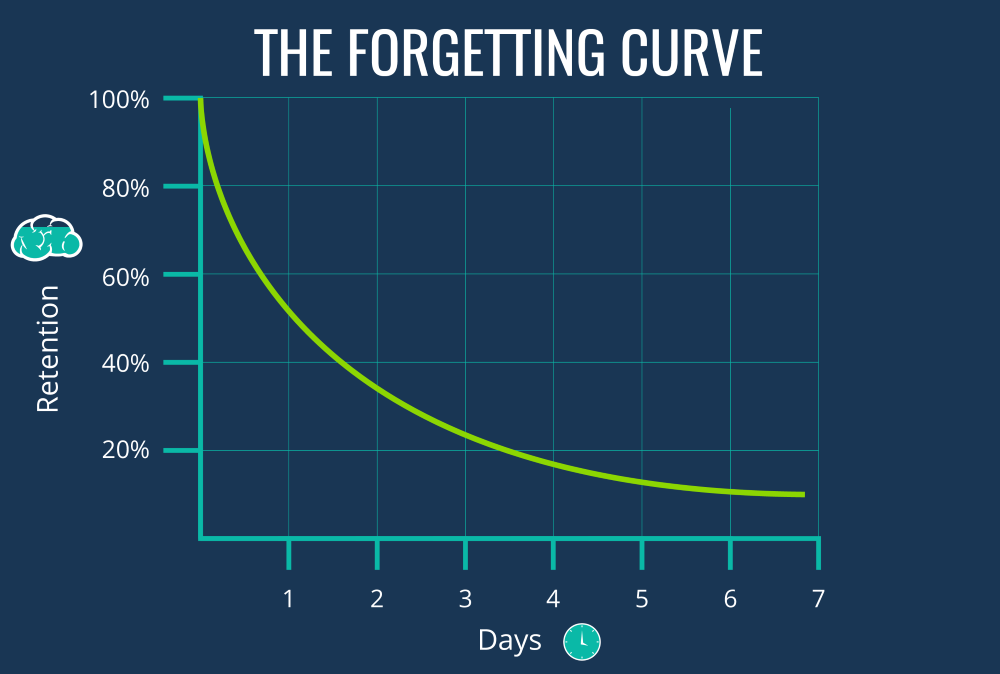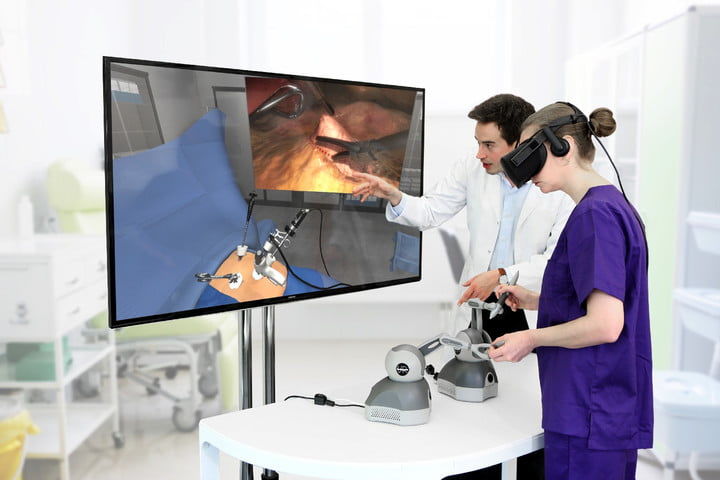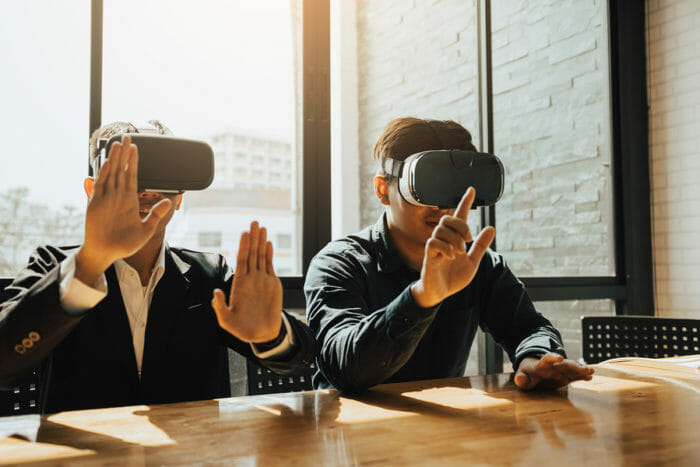5 Top Advantages Of Using Virtual Reality For Safety Training




5 Top Advantages Of Using Virtual Reality In Safety Training
The use of Virtual Reality for safety training programs makes it easier than ever to improve worker compliance.
This is because traditional training methods aren’t enough to prepare workers for the dangers on the job.
In this blog, we’ll cover 5 of the top advantages in using Virtual Reality for safety training compared to other methods.
To understand why it’s necessary to change the way we train workers, it’s important to familiarize yourself with the “Forgetting Curve.”

Image via: Growth Engineering
The “Forgetting Curve” describes how much information is retained after learning.
-
Within 1 hour, people forget an average of 50% of new information.
-
Within 24 hours, people forget an average of 70% of new information
Even though these are averages, the results show how difficult safety training is.
Unless learning methods are improved, workers in dangerous roles will remain vulnerable to injuries.
According to the Bureau of Labor Statistics (BLS) there were 2.8 million non fatal workplace injuries and illnesses reported in 2018.
These results are also significant from a cost perspective. The United States spends $87.6 Billion every year on corporate training.
Considering 70% of new information is forgotten by the average person after 24 hours, you can imagine how much money is wasted everyday.
This is why Virtual Reality is essential for preparing the workforce of today.
5 Top Advantages of Virtual Reality For Safety Training
1. Retention

Image via: Healthiar
Dr. Narendra Kini, CEO at Miami’s Children’s Health System found retention after a week from Virtual Reality training is as high as ~80%, compared to ~20% from traditional methods.
She said “virtual reality is a god-send” for “scenarios where they need to practice for accreditation and or compliance.”
The high retention rates from Virtual Reality are a result of learning by doing. People can learn through realistic scenarios and are forced to think on their feet.
In another example, Yale University used Virtual Reality to train surgical residents for gallbladder dissections. They found that compared to traditional methods, surgeons using Virtual Reality performed surgery 29% faster and were 6X less likely to make a mistake.
2. Scalability

Via: TLNT
Scalability is another advantage of using Virtual Reality for safety training.
Traditionally, textbooks and videos are the most scalable and accessible method of learning. These materials can be easily distributed to many people but they’re less engaging overall. It’s not easy applying concepts into practical situations.
At the other end of the spectrum, training with real life scenarios is the most practical but least scalable form of learning. There's a limit to repeatability and instructors available.
Virtual Reality gives you the best of both worlds because it’s scalable and effective. It’s capable of being deployed to large groups of people at once and they have the opportunity to learn in a realistic environment.
The only thing needed is a Virtual Reality headset and training program.
3. Immersion

Via: Samsung
There ain’t nothing like the real thing.
But Virtual Reality comes close.
The realism of Virtual Reality gives people the feeling of “presence” and makes them suspend their disbelief. The best way to prepare them for dangerous scenarios is to recreate the situation as closely as possible.
It’s hard to know what to expect by reading a book or watching a video. People have to truly experience the pressure and emotion involved with making decisions on the fly. A study by the University of Nottingham found that “higher levels of negative emotion were associated with higher levels of realism.”
These emotions provide deeper insights into how people react under pressure. It’s these insights that make Virtual Reality such a powerful training method.
4. Cost Effective

Via: Maintenance and Cure
If you’re a new employee working on an off-shore oil rig and it catches on fire, what do you do?
Unless you’ve been properly trained, it’s hard to know how you’d react. But companies can’t just set an oil rig on fire every time they want to train a new employee.
As mentioned earlier, training manuals and videos aren’t enough to prepare workers for crisis scenarios.
Virtual Reality also makes it possible to run workers through simulations repeatedly with no additional costs. This gives workers a safe environment to work through proper procedures and improve their skills. With cheaper headsets and increased access, Virtual Reality is an obvious choice.
5. Detailed Insights

Via: Towards Data Science
Virtual Reality provides detailed insights about user behavior that can help companies measure success. Evaluators and trainers have the ability to observe individuals and provide feedback using After Action Review (AAR) within Virtual Reality.
Below are examples of metrics that can be captured:
Eye tracking:
- Do workers recognize hazards?
- How long does it take them to react?
Interactions:
- How are workers interacting with the simulation?
- Are they compliant?
- Did they complete the sequence in actions properly?
Eye tracking and interactions should be measured in relation to each other for additional insights
Biometrics:
Track how users are reacting emotionally to the virtual environment:
-
Heart Rate: Gauge how the simulation affects their heart rate.
-
GSR (Galvanic Skin Response): This measures the reaction of the skin to the stimuli.
-
EEG (Electroencephalography): This measures how the brain reacts to certain stimuli.
These inputs give companies a better idea of what behavioral patterns lead to success or failure. For example, users that aren’t compliant may have extreme emotional reactions and find it difficult to operate under pressure.
Getting Started
This blog covered 5 of the top advantages for using Virtual Reality in safety training.
Due to these advantages, there’s been a huge movement by many companies to implement Virtual Reality. Some examples include Walmart, UPS and Boeing.
But Virtual Reality by itself isn’t a magic pill. You must develop proper programs, track user behavior and measure success.
At Cognitive3D we make it easy for you to capture data.
We are headset agnostic and support a number of software engines such as Unity, Unreal, C++ and JS.
This means you can simply install our SDK and connect your headset to collect analytics.